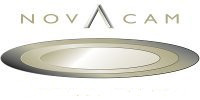Fast & precise non-contact 3D metrology of surface details – What would Mr. Lincoln say?
Check out 2 measurement scenarios that illustrate the ability of interferometry to capture surface details quickly and precisely.
This author has not written his bio yet.
But we are proud to say that radka contributed 37 entries already.
Check out 2 measurement scenarios that illustrate the ability of interferometry to capture surface details quickly and precisely.
Post last updated on October 15, 2021
Angled surfaces such as aircraft countersinks present a challenge to many contact and optical metrology systems. NOVACAM 3D metrology systems measure these tapered metal or composite surfaces automatically, down to the micron, and in-process. Read about NOVACAM systems’ countersink metrology which is fully suitable to automated robotized fastening operations on the plant floor.
Inspecting tapered holes with bluing plug gauges is a simple and economical GO/NO-GO technique. However, it is a subjective, estimate-based technique requiring considerable operator experience. Here we briefly describe the bluing process and then look at an alternative approach for taper hole measurements that uses fiber-based optical probes for full and automated 3D metrology of their IDs.
Support for automation, micron-level precision, high scanning speed, versatility and ruggedness of NOVACAM non-contact 3D metrology systems have been appreciated by clients in high-precision industries for over 20 years. Read about support for automation by NOVACAM product line.
In this year of Covid-19, demand for automated high-precision inspection is on an upswing. So how can Novacam help you find an automated 3D metrology solution for your application?
Measuring circumferential (inside contour) roughness in hard-to-reach spaces is a challenge that Novacam systems meet in applications across high-precision industries.
Measuring the tiny narrow grooves that pattern CMP pads in the semi-conductor industry are a particular specialty of Novacam 3D metrology systems. Read about how the high-precision process of flattening and polishing silicon wafers benefits from non-contact 3D measurements that Novacam systems provide.
Measuring roughness in hard-to-reach places is a challenge for many manufacturers. To address this challenge, Novacam designs and manufactures optical 3D profilometers that measure inside tight spaces such as ID surfaces of bores, tubes, and cylinders, or bottoms of blind holes, slots, or narrow channels where most other roughness gauges simply cannot reach.
MACH UK 15-19 April, 2024
Automate Chicago, May 6-9, 2024
IMTS Chicago, September 9-14, 2024
Novacam Technologies Headquarters
1755 St Regis, Suite #130
Dollard-Des-Ormeaux, QC
H9B 2M9, CANADA
E-mail: info@novacam.com
Tel. international: +1-514-694-4002
We may request cookies to be set on your device. We use cookies to let us know when you visit our websites, how you interact with us, to enrich your user experience, and to customize your relationship with our website.
Click on the different category headings to find out more. You can also change some of your preferences. Note that blocking some types of cookies may impact your experience on our websites and the services we are able to offer.
These cookies are strictly necessary to provide you with services available through our website and to use some of its features.
Because these cookies are strictly necessary to deliver the website, you cannot refuse them without impacting how our site functions. You can block or delete them by changing your browser settings and force blocking all cookies on this website.
These cookies collect information that is used either in aggregate form to help us understand how our website is being used or how effective our marketing campaigns are, or to help us customize our website and application for you in order to enhance your experience.
If you do not want that we track your visist to our site you can disable tracking in your browser here:
We also use different external services like Google Webfonts, Google Maps and external Video providers. Since these providers may collect personal data like your IP address we allow you to block them here. Please be aware that this might heavily reduce the functionality and appearance of our site. Changes will take effect once you reload the page.
Google Webfont Settings:
Google Map Settings:
Vimeo and Youtube video embeds:
You can read about our cookies and privacy settings in detail on our Privacy Policy Page.
Privacy Policy